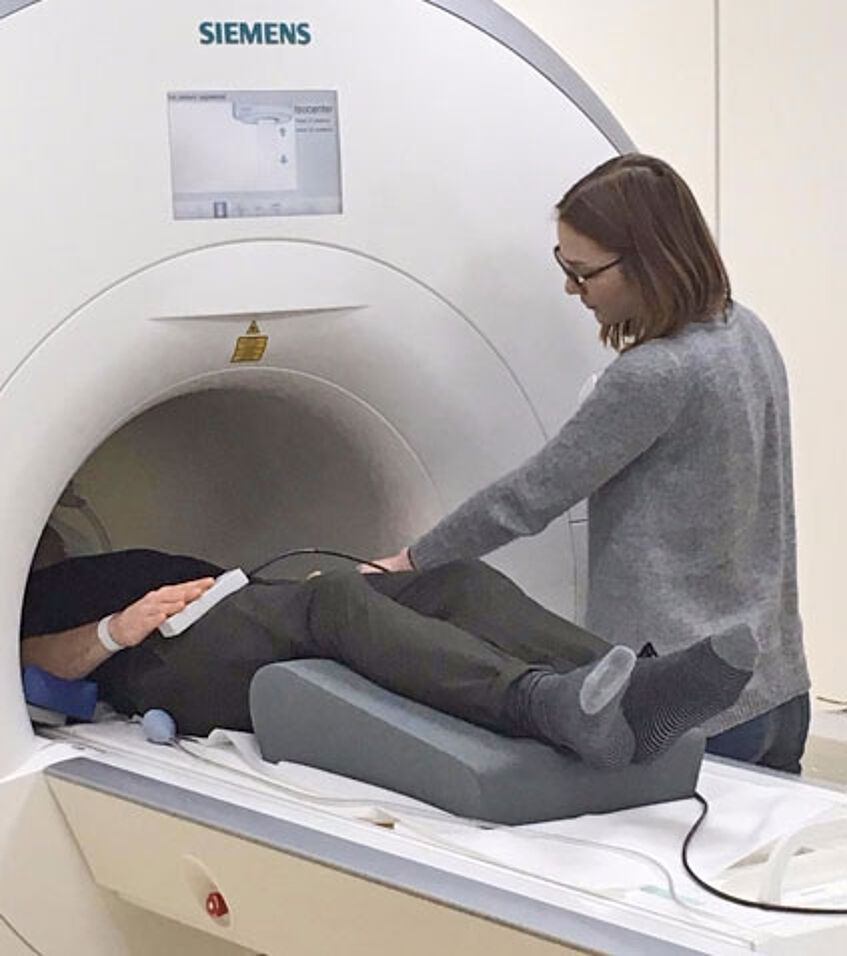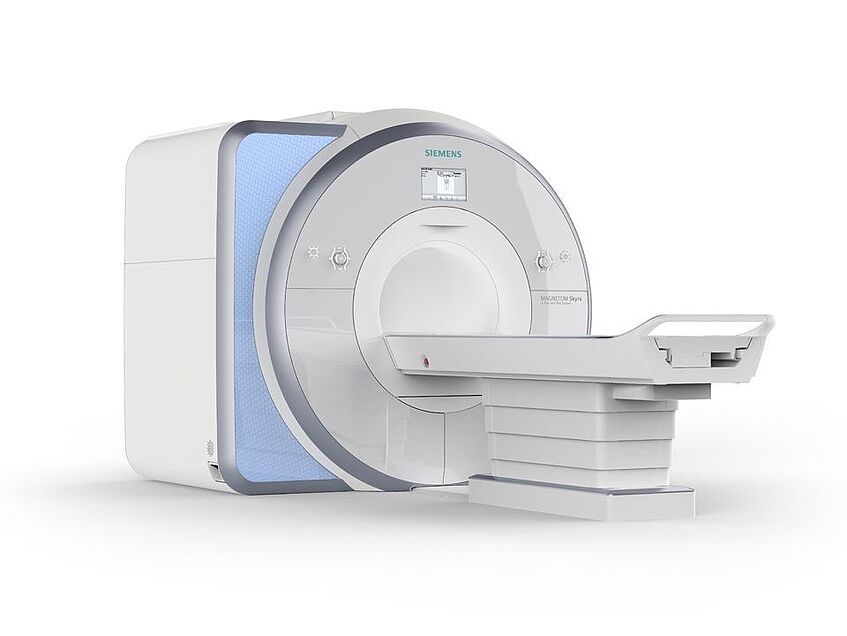University of Vienna MR Center

The University of Vienna MR Center is a research facility for (functional) magnetic resonance imaging. It is directed by Univ.-Prof. Claus Lamm (SCAN-Unit, Faculty of Psychology, University of Vienna).
Since 2014, the MR Center has enabled a variety of interdisciplinary studies in the domain of social, cognitive, affective, and clinical neuroscience, leading to numerous publications in prestigious scientific journals (see Publications).
The centerpiece of the MR Center is a Siemens MAGNETOM Skyra 3 Tesla MRI scanner with a state-of-the-art gradient system and 32-channel head coil, allowing for high-resolution structural and functional imaging of the human brain. Additionally, studies combining fMRI with electroencephalography (EEG) or transcranial magnetic stimulation (TMS) can be performed in cooperation with the EEG Lab and the Brain Stimulation Lab of the University of Vienna.

Staff
Priv.-Doz. Dr. Ronald Sladky
MR Physics, neuroimaging, and cognitive science
Contact: ronald.sladky@univie.ac.at
Ronald Sladky is a senior scientist at the Faculty of Psychology and managing the University of Vienna MR Center. His responsibilities encompass:
- MRI study design and planning support
- Scanner hardware and software support
- Real-time fMRI neurofeedback support
- Project management and scheduling
- MRI safety management
- User training
He worked as a software/web developer and studied computer science and cognitive science in Vienna. Supervised by Christian Windischberger, he received a PhD and habilitation in Medical Physics at the Medical University of Vienna for his work on functional MRI methodology and brain connectivity in psychiatric patients. After that, he spent two years as a Postdoc in Frank Scharnowski’s Lab at the Psychiatric Hospital of the University of Zurich and was involved in real-time fMRI studies to investigate the applicability of fMRI-based neurofeedback training.
For many years, Ronald Sladky has been responsible for the planning, study design, execution, data analysis, and management of research projects in a variety of different scientific topics, including social anxiety and other psychiatric disorders, decision making and situational awareness in airline pilots, and creativity research. He has experience working on various high- and ultra-high field MRI scanner types (Siemens MAGNETOM Skyra, Trio, Prismafit, 7T; Philips Achieva; Bruker Biospin Medspec S300).

Mag. Lukas Lengersdorff
Lukas Lengersdorff is a PhD student at the Faculty of Psychology and co-managing the University of Vienna MR Center. His responsibilities encompass:
- Project management and scheduling
- MRI safety management
- User training
Lukas Lengersdorff’s academic research focusses on empathy, prosocial behavior and aggression, and how these processes are modulated by factors such as in-group/out-group biases and exposure to violence in media. In his function as researcher and lab manager, he has acquired a high level of expertise in fMRI, EEG, and psychophysiological measures.

Univ.-Prof. Claus Lamm
Claus Lamm is a Full Professor of Biological Psychology and head of the Social, Cognitive and Affective Neuroscience Unit at the Faculty of Psychology of the University of Vienna. He is the director of the MR Center and responsible for
- Management and supervision
- Cooperation projects
- Public outreach
Claus Lamm’s scientific interests focus on the neural underpinnings of empathy and prosocial behavior. This includes recent multi-modal investigations combining neuroimaging with psychopharmacology and psychoneuroendocrinology, as well as comparative approaches to test empathy and its precursors in ravens and dogs.
Infrastructure and Equipment
- Siemens MAGNETOM Skyra 3 Tesla MRI scanner (bore dimension: 163cm ✕ 70cm)
- Siemens 32-channel head coil, 24-channel head coil, canine head coil (Medical University of Vienna, RF Lab, K9 coil), knee coil, spine coil
- PC-Workstation for stimulus presentation and real-time fMRI neurofeedback (Intel i9 8✕3,66 GHz, 32GB RAM)
- MRI-compatible, 32-inch display for stimulus presentation (BOLDscreen 32 LCD for fMRI, Cambridge Research Systems)
- MRI-compatible eye-tracking system (EyeLink 1000 Plus, SR Research)
- MRI-compatible physiological signal and skin conductance recording system (BrainAmp ExG MR 16, Brain Products)
- MRI-compatible in-ear headphone system (S14, Sensimetrics)
- MRI-compatible response box (4-Button Fiber Optic Response Pad, Current Designs)
Funding
The MR Center has been established as part of a collaborative infrastructure use initiative granted by the Federal Ministry of Science, Research and Economy (Interdisciplinary Translational Brain Research Cluster with High Field MR Magnetic Resonance, Hochschulraumstrukturmittel-Initiative).
Location
Universitätszahnklinik Wien
Abteilung für Radiologie
Sensengasse 2a
1090 Wien



